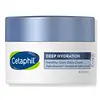What's inside
What's inside
 Key Ingredients
Key Ingredients

 Benefits
Benefits

 Concerns
Concerns

 Ingredients Side-by-side
Ingredients Side-by-side

Water
Skin ConditioningGlycerin
HumectantButyrospermum Parkii Butter
Skin ConditioningCetearyl Alcohol
EmollientMethylpropanediol
SolventGlyceryl Stearate
EmollientOctocrylene
UV AbsorberSodium Phenylbenzimidazole Sulfonate
UV AbsorberC12-15 Alkyl Benzoate
AntimicrobialCera Microcristallina
Emulsion StabilisingButyl Methoxydibenzoylmethane
UV AbsorberParaffinum Liquidum
EmollientCaprylic/Capric Triglyceride
MaskingGlyceryl Glucoside
HumectantPrunus Amygdalus Dulcis Oil
Skin ConditioningTocopheryl Acetate
AntioxidantPanthenol
Skin ConditioningDimethicone
EmollientPotassium Cetyl Phosphate
EmulsifyingHydrogenated Palm Glycerides
EmollientAcrylates/C10-30 Alkyl Acrylate Crosspolymer
Emulsion StabilisingChondrus Crispus Extract
Skin ConditioningEthylhexylglycerin
Skin ConditioningPhenoxyethanol
PreservativeMethylparaben
PreservativeEthylparaben
PreservativeTrisodium EDTA
Butylphenyl Methylpropional
PerfumingLinalool
PerfumingCitronellol
PerfumingBenzyl Alcohol
PerfumingLimonene
PerfumingGeraniol
PerfumingAlpha-Isomethyl Ionone
PerfumingCitral
PerfumingParfum
MaskingWater, Glycerin, Butyrospermum Parkii Butter, Cetearyl Alcohol, Methylpropanediol, Glyceryl Stearate, Octocrylene, Sodium Phenylbenzimidazole Sulfonate, C12-15 Alkyl Benzoate, Cera Microcristallina, Butyl Methoxydibenzoylmethane, Paraffinum Liquidum, Caprylic/Capric Triglyceride, Glyceryl Glucoside, Prunus Amygdalus Dulcis Oil, Tocopheryl Acetate, Panthenol, Dimethicone, Potassium Cetyl Phosphate, Hydrogenated Palm Glycerides, Acrylates/C10-30 Alkyl Acrylate Crosspolymer, Chondrus Crispus Extract, Ethylhexylglycerin, Phenoxyethanol, Methylparaben, Ethylparaben, Trisodium EDTA, Butylphenyl Methylpropional, Linalool, Citronellol, Benzyl Alcohol, Limonene, Geraniol, Alpha-Isomethyl Ionone, Citral, Parfum
Water
Skin ConditioningDicaprylyl Carbonate
EmollientGlycerin
HumectantCaprylic/Capric Triglyceride
MaskingGlyceryl Stearate Citrate
EmollientCetearyl Alcohol
EmollientNiacinamide
SmoothingAnhydroxylitol
HumectantButyrospermum Parkii Oil
EmollientCitric Acid
BufferingGlobularia Alypum Leaf Extract
Skin ConditioningHydrolyzed Hyaluronic Acid
HumectantPanthenol
Skin ConditioningPantolactone
HumectantPhenoxyethanol
PreservativeSodium Benzoate
MaskingSodium Polyacrylate
AbsorbentSqualane
EmollientTocopherol
AntioxidantXylitol
HumectantXylitylglucoside
HumectantWater, Dicaprylyl Carbonate, Glycerin, Caprylic/Capric Triglyceride, Glyceryl Stearate Citrate, Cetearyl Alcohol, Niacinamide, Anhydroxylitol, Butyrospermum Parkii Oil, Citric Acid, Globularia Alypum Leaf Extract, Hydrolyzed Hyaluronic Acid, Panthenol, Pantolactone, Phenoxyethanol, Sodium Benzoate, Sodium Polyacrylate, Squalane, Tocopherol, Xylitol, Xylitylglucoside
 Reviews
Reviews

Ingredients Explained
These ingredients are found in both products.
Ingredients higher up in an ingredient list are typically present in a larger amount.
This ingredient is an emollient, solvent, and texture enhancer. It is considered a skin-softener by helping the skin prevent moisture loss.
It helps thicken a product's formula and makes it easier to spread by dissolving clumping compounds.
Caprylic Triglyceride is made by combining glycerin with coconut oil, forming a clear liquid.
While there is an assumption Caprylic Triglyceride can clog pores due to it being derived from coconut oil, there is no research supporting this.
Learn more about Caprylic/Capric TriglycerideCetearyl alcohol is a mixture of two fatty alcohols: cetyl alcohol and stearyl alcohol. It is mainly used as an emulsifier. Emulsifiers help prevent the separation of oils and products. Due to its composition, it can also be used to thicken a product or help create foam.
Cetearyl alcohol is an emollient. Emollients help soothe and hydrate the skin by trapping moisture.
Studies show Cetearyl alcohol is non-toxic and non-irritating. The FDA allows products labeled "alcohol-free" to have fatty alcohols.
This ingredient is usually derived from plant oils such as palm, vegetable, or coconut oils. There is debate on whether this ingredient will cause acne.
Due to the fatty acid base, this ingredient may not be Malassezia folliculitis safe.
Learn more about Cetearyl AlcoholGlycerin is already naturally found in your skin. It helps moisturize and protect your skin.
A study from 2016 found glycerin to be more effective as a humectant than AHAs and hyaluronic acid.
As a humectant, it helps the skin stay hydrated by pulling moisture to your skin. The low molecular weight of glycerin allows it to pull moisture into the deeper layers of your skin.
Hydrated skin improves your skin barrier; Your skin barrier helps protect against irritants and bacteria.
Glycerin has also been found to have antimicrobial and antiviral properties. Due to these properties, glycerin is often used in wound and burn treatments.
In cosmetics, glycerin is usually derived from plants such as soybean or palm. However, it can also be sourced from animals, such as tallow or animal fat.
This ingredient is organic, colorless, odorless, and non-toxic.
Glycerin is the name for this ingredient in American English. British English uses Glycerol/Glycerine.
Learn more about GlycerinPanthenol is a common ingredient that helps hydrate and soothe the skin. It is found naturally in our skin and hair.
There are two forms of panthenol: D and L.
D-panthenol is also known as dexpanthenol. Most cosmetics use dexpanthenol or a mixture of D and L-panthenol.
Panthenol is famous due to its ability to go deeper into the skin's layers. Using this ingredient has numerous pros (and no cons):
Like hyaluronic acid, panthenol is a humectant. Humectants are able to bind and hold large amounts of water to keep skin hydrated.
This ingredient works well for wound healing. It works by increasing tissue in the wound and helps close open wounds.
Once oxidized, panthenol converts to pantothenic acid. Panthothenic acid is found in all living cells.
This ingredient is also referred to as pro-vitamin B5.
Learn more about PanthenolPhenoxyethanol is a preservative that has germicide, antimicrobial, and aromatic properties. Studies show that phenoxyethanol can prevent microbial growth. By itself, it has a scent that is similar to that of a rose.
It's often used in formulations along with Caprylyl Glycol to preserve the shelf life of products.
Water. It's the most common cosmetic ingredient of all. You'll usually see it at the top of ingredient lists, meaning that it makes up the largest part of the product.
So why is it so popular? Water most often acts as a solvent - this means that it helps dissolve other ingredients into the formulation.
You'll also recognize water as that liquid we all need to stay alive. If you see this, drink a glass of water. Stay hydrated!
Learn more about Water